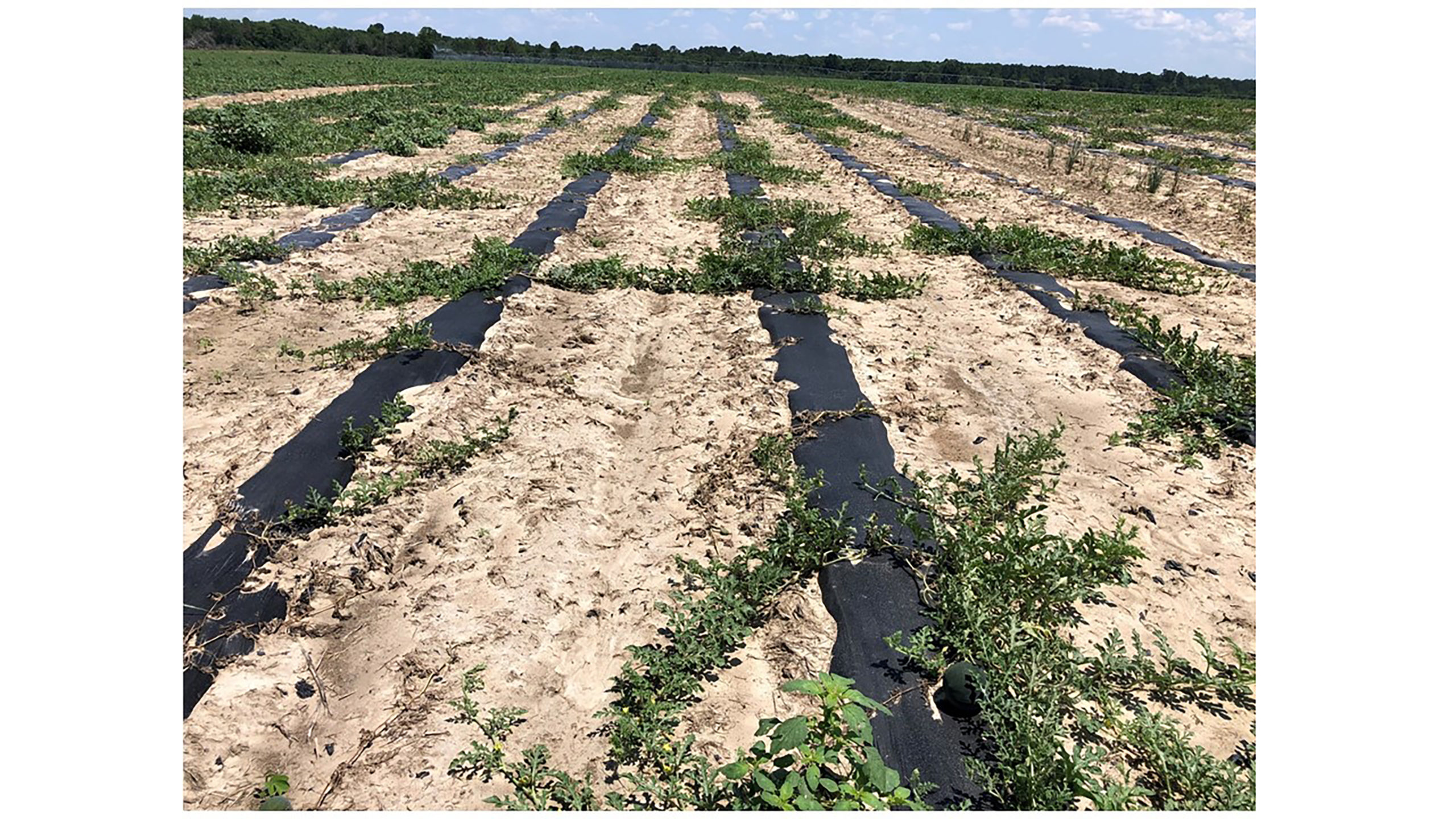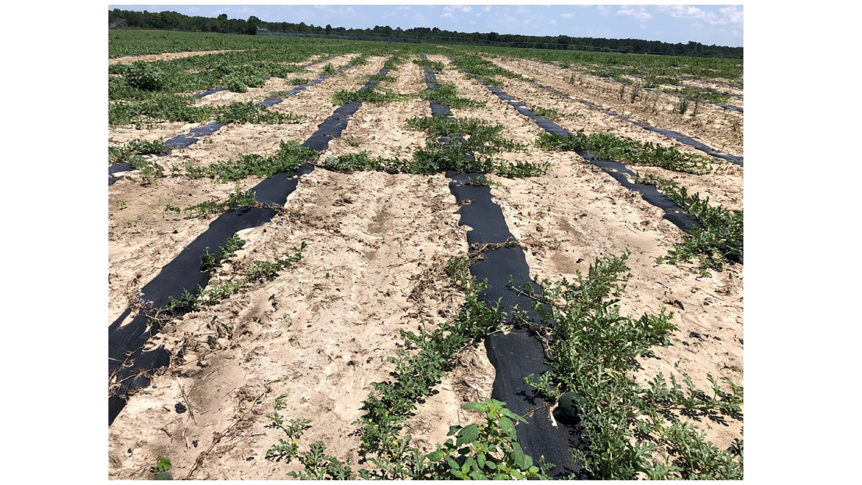North Florida watermelon producers should be wary that Fusarium wilt symptoms have been observed in some fields, according to Bob Hochmuth, University of Florida Institute of Food and Agricultural Sciences (UF/IFAS) Regional Specialized Extension agent in Live Oak, Florida.

His weekly email included an alert that a “high percentage of plants in parts of fields have shown wilting.”
“You may notice a runner or two starting to wilt, but as the season progresses, the entire plant may succumb to the disease,” the email read.
Favorable Weather Conditions
Weather conditions are ripe for the pathogen to continue its growth this week. Conditions are no longer favorable for the pathogen when the soil temperatures increase, but the infection has already occurred.
“As the demand for water increases as vines grow and fruit begin to set, you will notice more plants exhibiting symptoms resulting from the clogging of the vascular system responsible for transporting water,” the email added. “If you notice plants with low vigor, wilting during the hottest parts of the day and with a grayish-green appearance, you can test in the field for Fusarium.”
Growers who sample watermelon plants with symptoms should cut downward through the middle of the crown and inspect the color of the vascular system. A brown or orange discoloration along the vascular vessels at the crown will appear in an infected plant. A healthy plant will be whitish or light green.
Unfortunately, there are no management options available for the disease after the crop is established. Producers are encouraged to contact their local Extension agent to submit a sample. Check page 33 of the UF/IFAS Watermelon Field Guide for additional information.
Fusarium wilt symptoms can appear at any growth stage. If they appear at the seedling stage, the plants will not even make it to vines. Plants infected with the pathogen will eventually die if the infection is severe. The plant can produce fruit if the infection is weak, but when it begins using the energy necessary to produce fruit, the plant will likely decline and slowly die.
PLEASE NOTE: No bacterial spot, powdery mildew or downy mildew have been detected or reported yet.










